Zeugma: The Ancient City of Mosaics on the Banks of the Euphrates
Zeugma Ancient City, located on the two opposite banks of the Euphrates River in northwestern Mesopotamia, is being meticulously brought to light since the beginning of the 21st century, along with its uniquely beautiful mosaics and frescoes, following the painstaking work carried out by archaeologists.
The ancient city of Zeugma was founded in 300 BC during the Hellenistic period by Seleucus I Nicator, a general of Alexander the Great, as a continuation of Antioch, the capital of the Seleucid Empire. Located on the shallowest part of the Euphrates River, the city was an important region in the context of the period, strategically significant in military and commercial terms. The city’s inhabitants consisted of high-ranking Seleucid Empire soldiers, merchants, and their slaves.
Built on opposite banks of the Euphrates River, the city consisted of two sections connected by a bridge: Seleukeia (East Bank) and Apameia (West Bank). Etymologically, the city’s name confirms this strategic function. The Greek word “Zeugma” means “passage, bridge.”
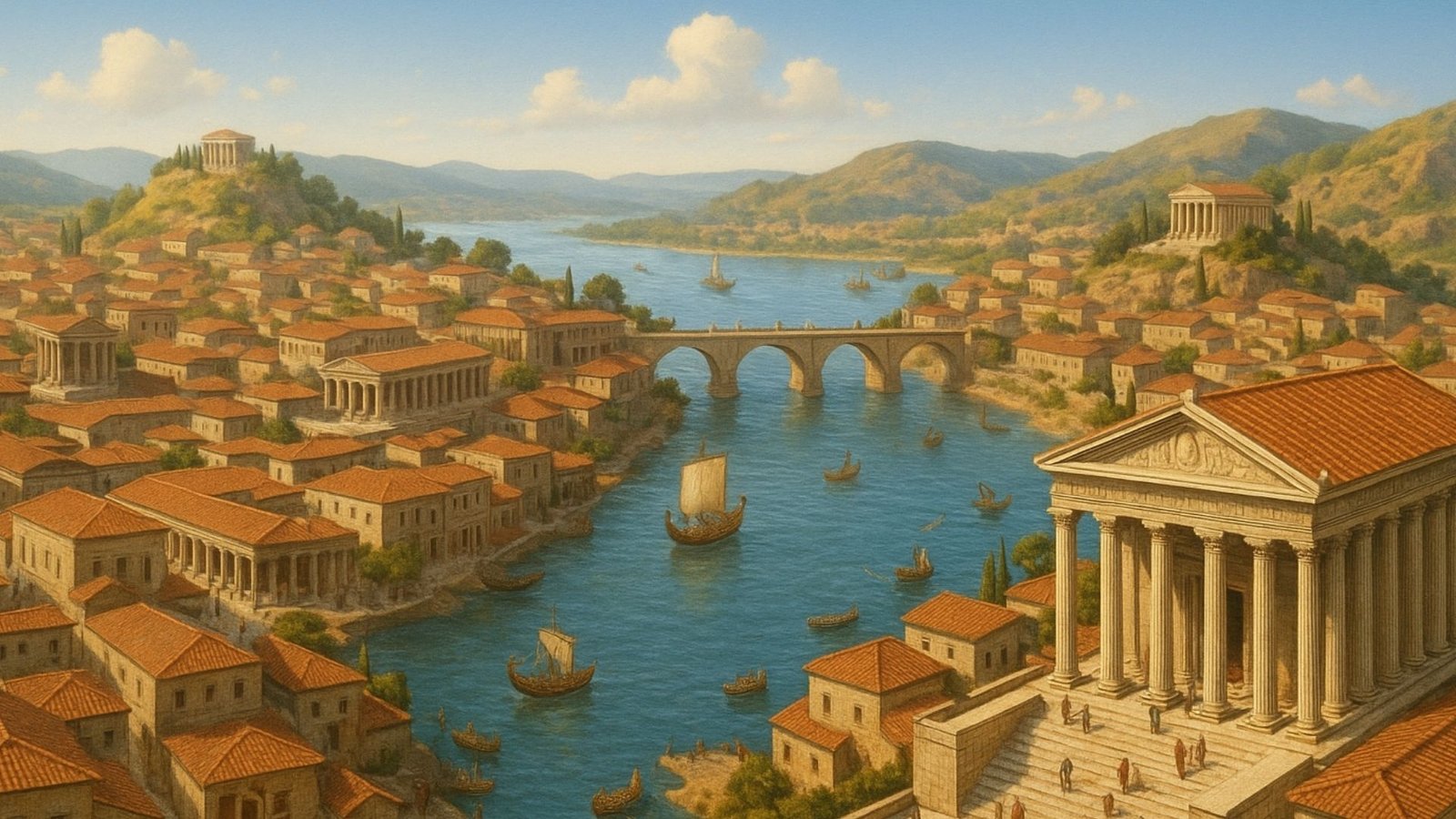
Zeugma Representation of the Seleucid Empire
Today, the ancient city of Zeugma, located in the village of Belkıs within the boundaries of the Nizip district of Gaziantep province in southeastern Anatolia, Turkey, has been the focus of many researchers and archaeologists in the 20th century and has been the subject of university theses.
In 1917, German archaeologist Carl Humann was the first to identify the correct location and name of the ancient city of Zeugma. Humann’s discovery was accepted academically, and subsequent academic studies recorded the name of the region as the ancient city of Zeugma instead of the Belkıs Ruins.
In the 1960s, during illegal excavations in the region, some parts of certain mosaics and frescoes were stolen piece by piece.
Prof. Dr. Kutalmış GörkayThe data obtained by German archaeologist Jörg Wagner in his physical studies in the 1970s confirmed the location of the Ancient City of Zeugma, adding certainty to these academic studies.
In the early 2000s, when it became clear that the Ancient City would be submerged under the dam waters due to the Ministry’s Birecik Dam Project, Rıfat Ergeç, Director of the Gaziantep Museum, conducted excavations at a depth of approximately 3 meters on the banks of the Euphrates River in 1992, uncovering the Zeugma villa, which was the first in the region to have mosaic-based walls covered with frescoes.
In the years that followed, excavations led by Prof. Dr. Kutalmış Görkay, Dr. Rıfat Ergeç, and Dr. M. Janin uncovered many remains from the Hellenistic period that formed the Zeugma Ancient City, a settlement belonging to the Seleucid Kingdom with an estimated population of 70,000.
As a result of intensive work carried out in the region, a large number of mosaic and fresco remains were transferred to the Zeugma Museum, established in Gaziantep Şehitkamil, which holds the title of the world’s second largest mosaic museum, thus saving them from being submerged under the dam waters. However, during this process, some pieces of mosaics and frescoes were stolen. Some of the stolen pieces were returned to their rightful place in the museum after being retrieved from the countries where they were found, thanks to the efforts of the Turkish Ministry of Culture and Tourism.
Zeugma Villas and Artistic Decorations
The villas built during the Hellenistic period were one of the most important factors showing the cultural identity of the owner, the importance they attached to their guests, and their status.
In the 300s BC, the city’s leading figures had stories, symbols, and characters from Greek mythology that represented and influenced them incorporated into the walls and floors of the villas they had built by the artists of the period.
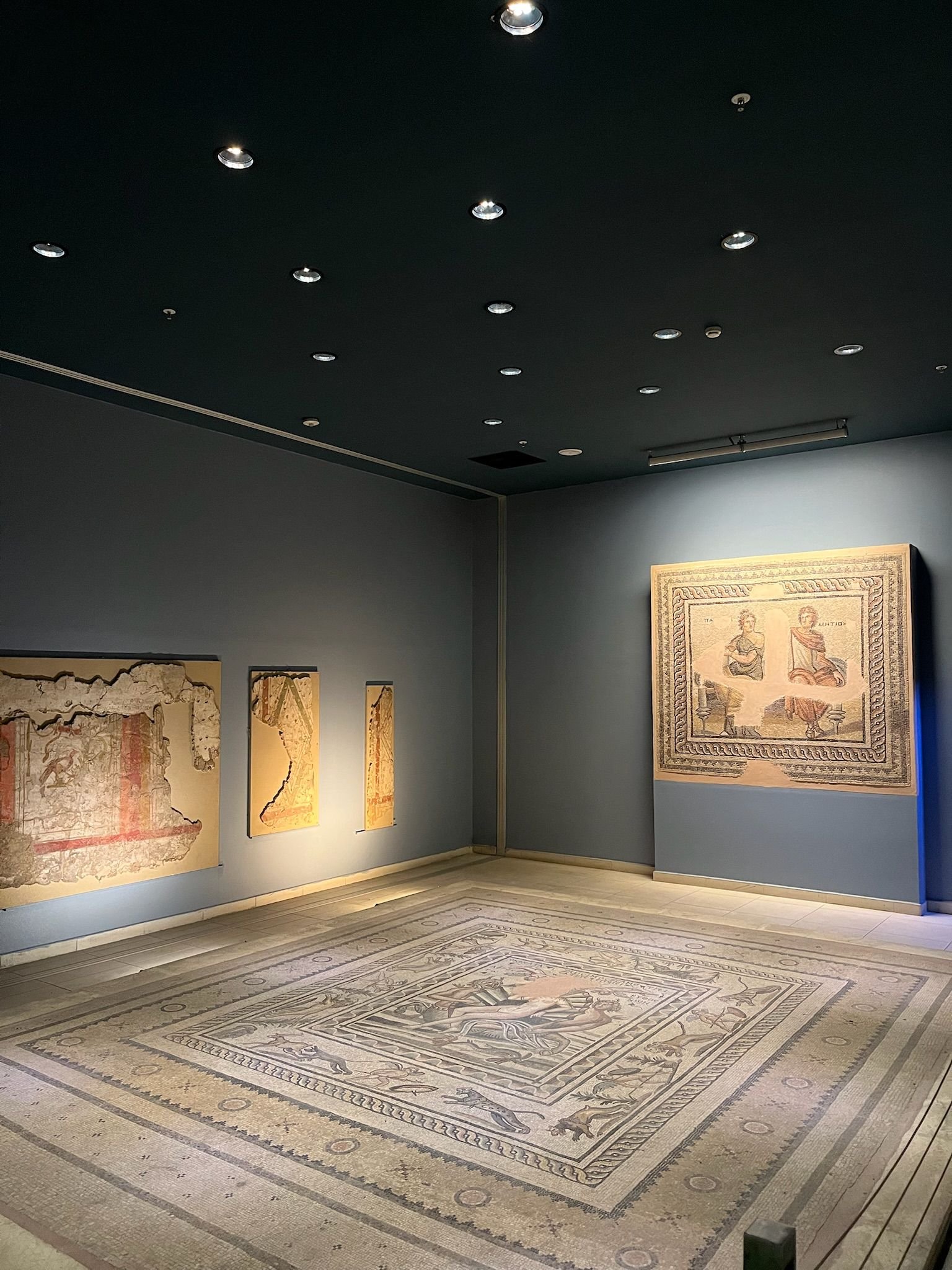
Zeugma Villas and Artistic Decorations / Zeugma Museum, Gaziantep
Looking at the remains found, frescoes on the walls and detailed colorful stone mosaic works on the floors are striking. These two flawless handicrafts bring together Greek mythology and visual art, creating a fascinating atmosphere.
The remains found in the ancient city reveal how widespread and professionally used handicrafts and stonework were in the Hellenistic period.
Zeugma Mosaics
Gypsy Girl Mosaic
According to Prof. Dr. Kutalmış Görkay, the Gypsy Girl mosaic is only a small part of a large painting found on the edge of the Maenad House. The central part of the painting, featuring the main figures of Orpheus and his mother Kalliope, was broken up and stolen during illegal excavations.
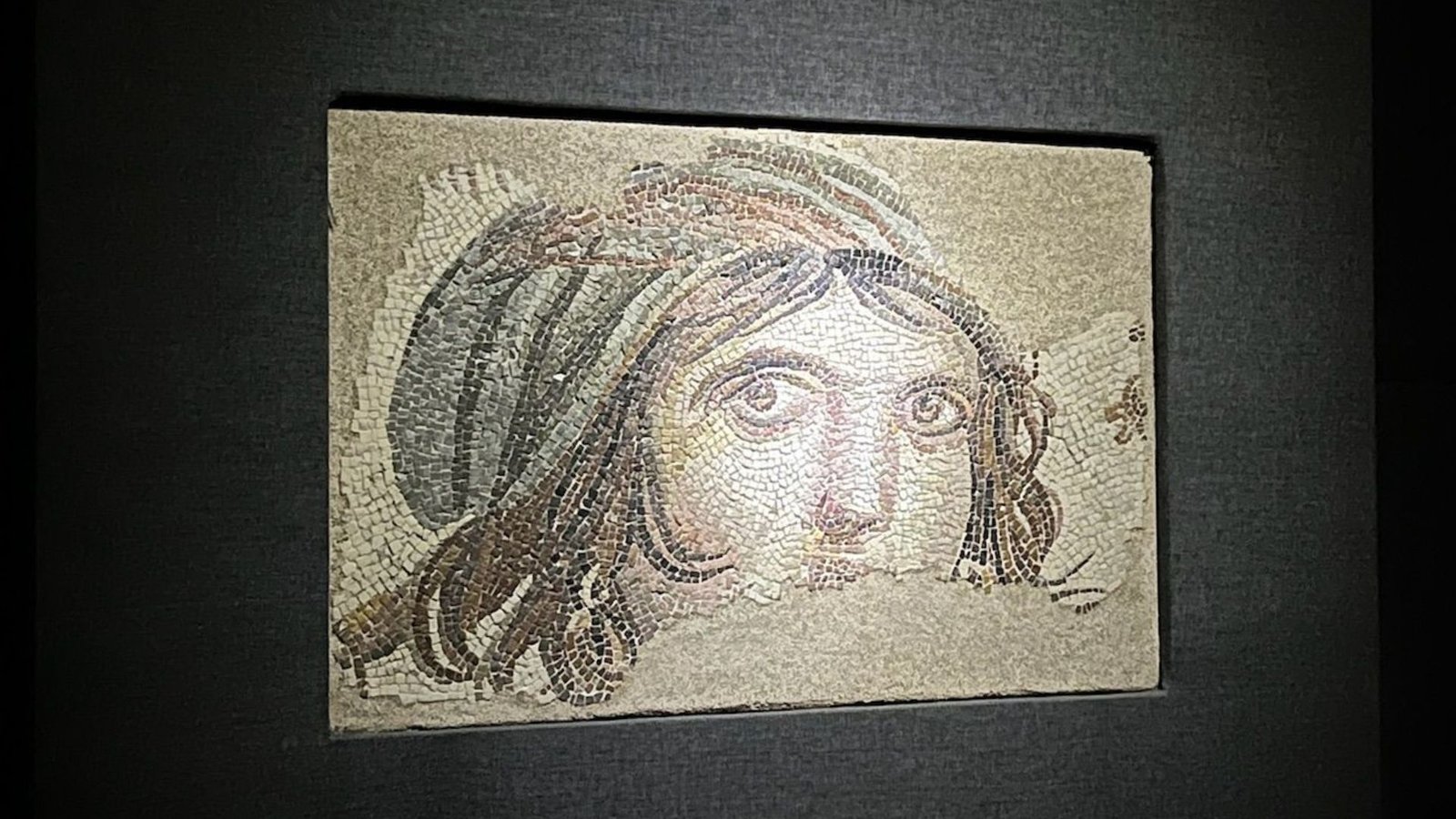
Gypsy Girl Mosaic / Zeugma Museum, Gaziantep
When archaeologists uncovered the remaining parts of the large panel during excavations at the Maenad House and saw the “Gypsy Girl” mosaic for the first time, they nicknamed it after the figure because they likened it to a gypsy girl due to her earrings and large eyes, as a joke in the excavation environment. Some researchers have suggested that this mosaic depicts the silhouette of Alexander the Great.
Gaia Mosaic
Gaia is known in Greek mythology as the earth goddess, mother of the earth. Gaia, seen as the source of life, is one of the oldest and most powerful goddesses in Greek mythology.
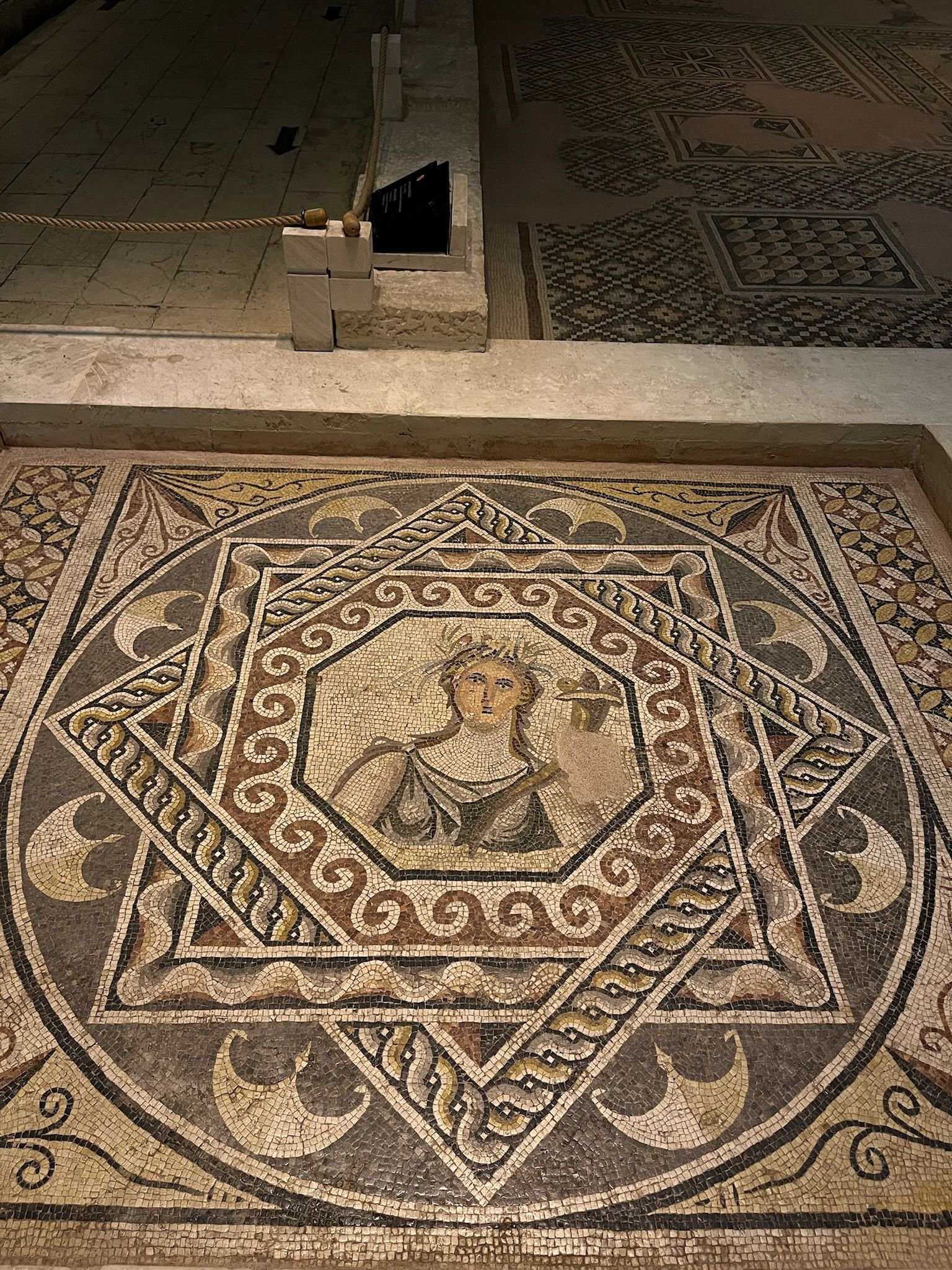
Gaia Mosaic / Zeugma Museum, Gaziantep
The Gaia mosaic is located in the pool in the villa’s courtyard. It is also known that this shallow pool was used by the household and guests living at that time to wash their feet.
Dining Room Mosaic
Dining rooms, measuring 7×8 and 11×11 meters, were among the largest rooms in the villa, where the owners and their guests reclined to eat, drink wine, and watch performances by invited artists. At that time, reclining to eat was a status symbol; only slaves ate standing up.
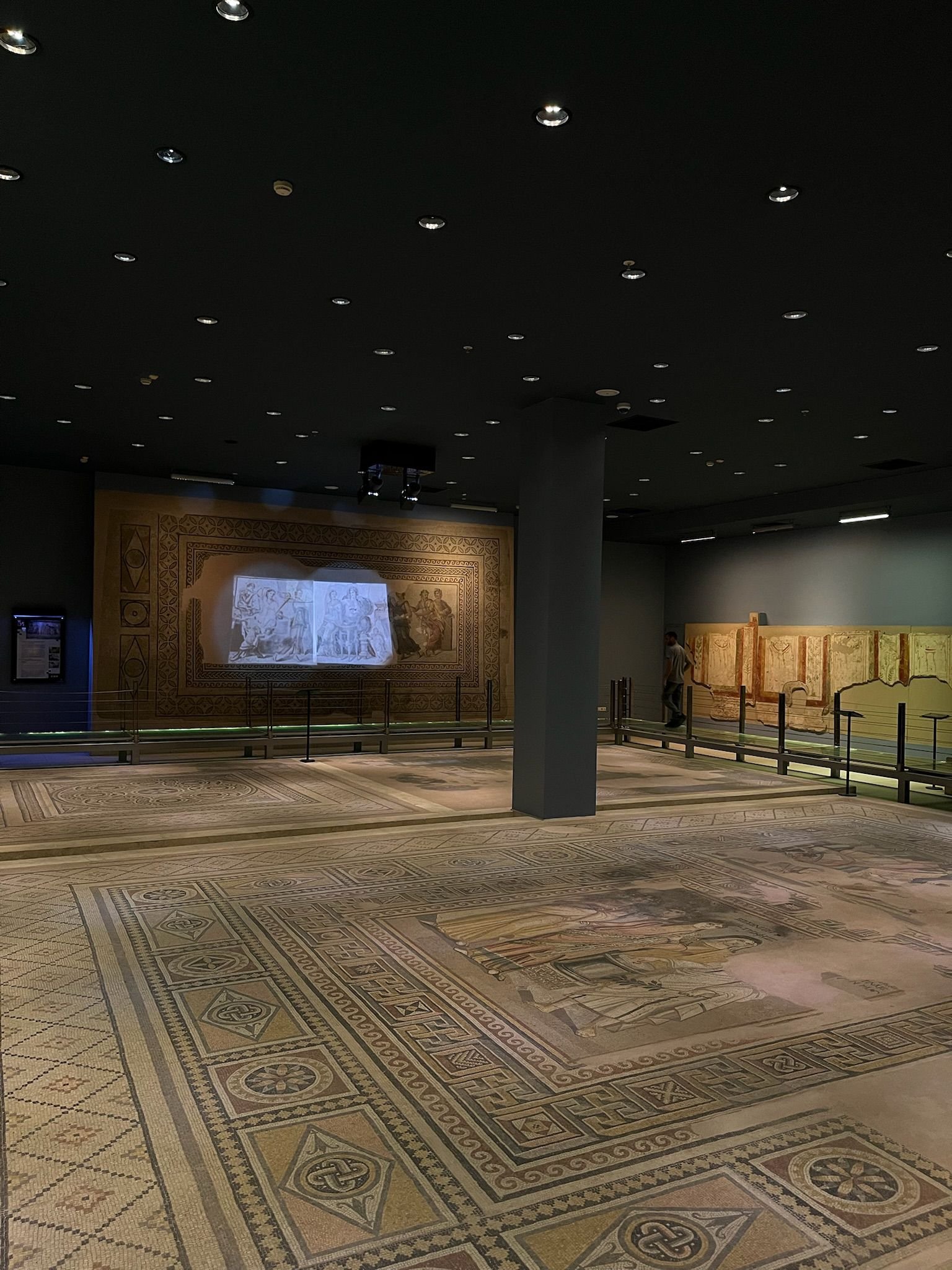
Dining Room Mosaic / Zeugma Museum, Gaziantep
Telete, Dionysus, and Skyrtos Mosaic
In the villas found in the city, depictions of events or people with mythological connotations specific to each room were incorporated. This mosaic is generally found in dining rooms called tricliniums. At that time, entertainment and dining were unthinkable without Dionysus.
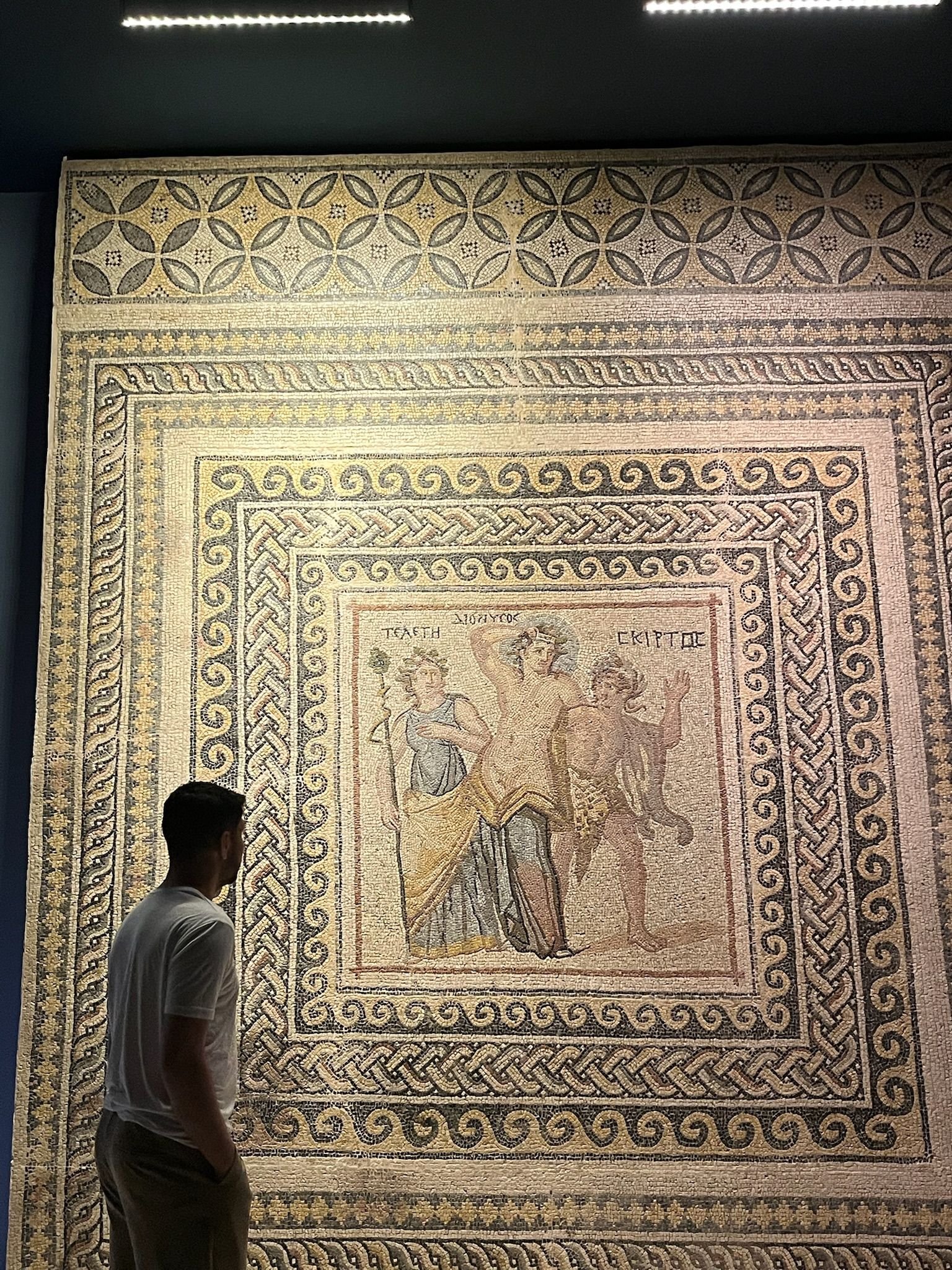
Telete, Dionysus, and Skyrtos Mosaic / Zeugma Museum, Gaziantep
In the mosaic, Dionysus, the god of wine, is in the center, with Telete, the mystical character who prepares souls for salvation, on his left, and Skyrtos, who evokes dance and happiness, on his right.
Dionysus Bust Mosaic
The mosaic of Dionysus, the god of wine, is estimated to have been built between the 2nd and 3rd centuries AD. Dionysus stands out with the crown of grape leaves on his head. The mosaic was rescued by archaeologists during excavations when the water level of the Birecik Dam decreased.
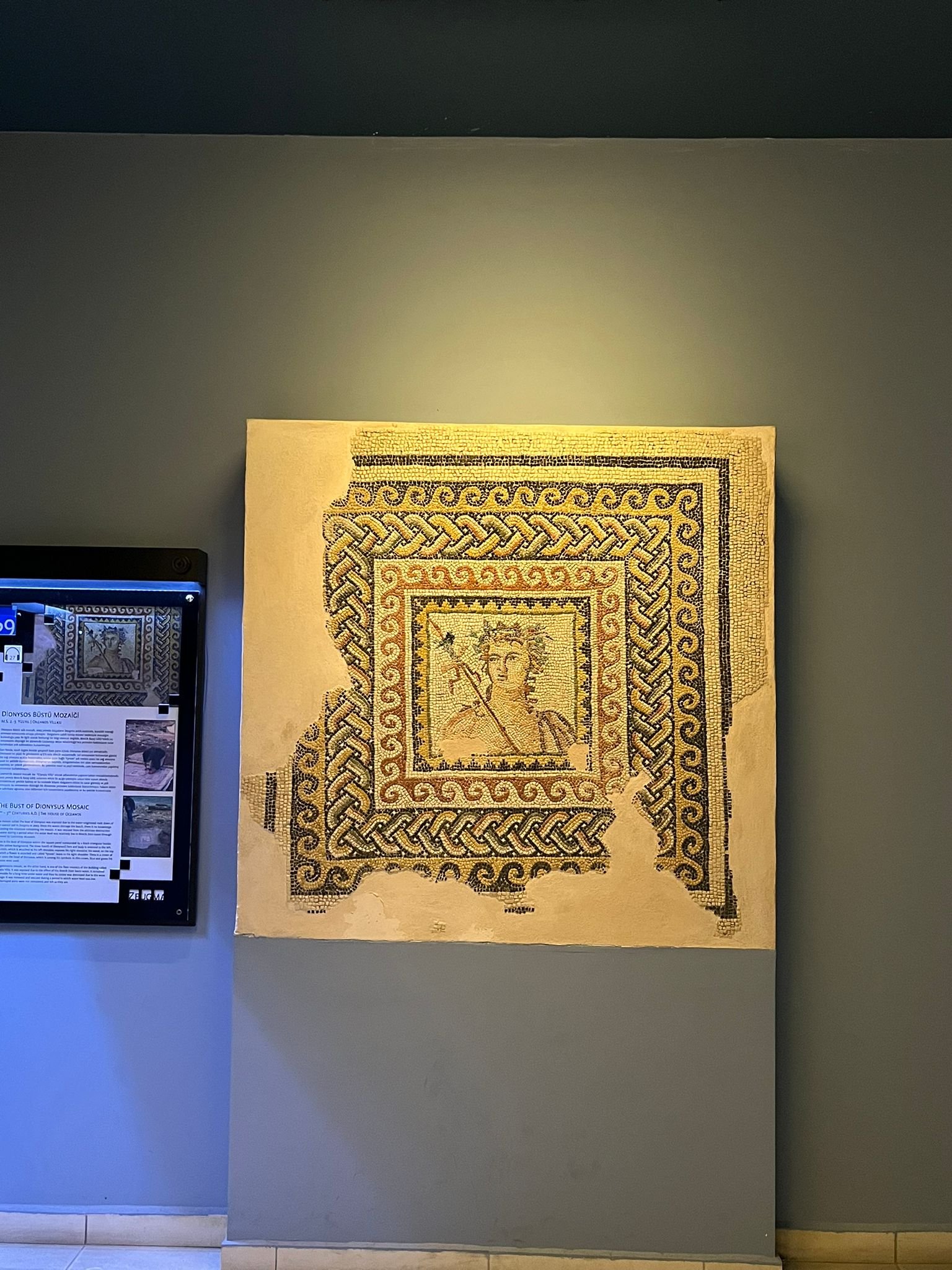
Dionysus Bust Mosaic / Zeugma Museum, Gaziantep
Eros and Psyche Mosaic
According to Greek mythology, Psyche, whose beauty brought her trouble, was to be punished by Aphrodite. Aphrodite ordered her son Eros to punish her. Eros, who went to carry out his mother’s order, fell in love with Psyche. Despite all the difficulties, he made her immortal, and they married. In the mosaic, both are depicted with wings, representing immortality.
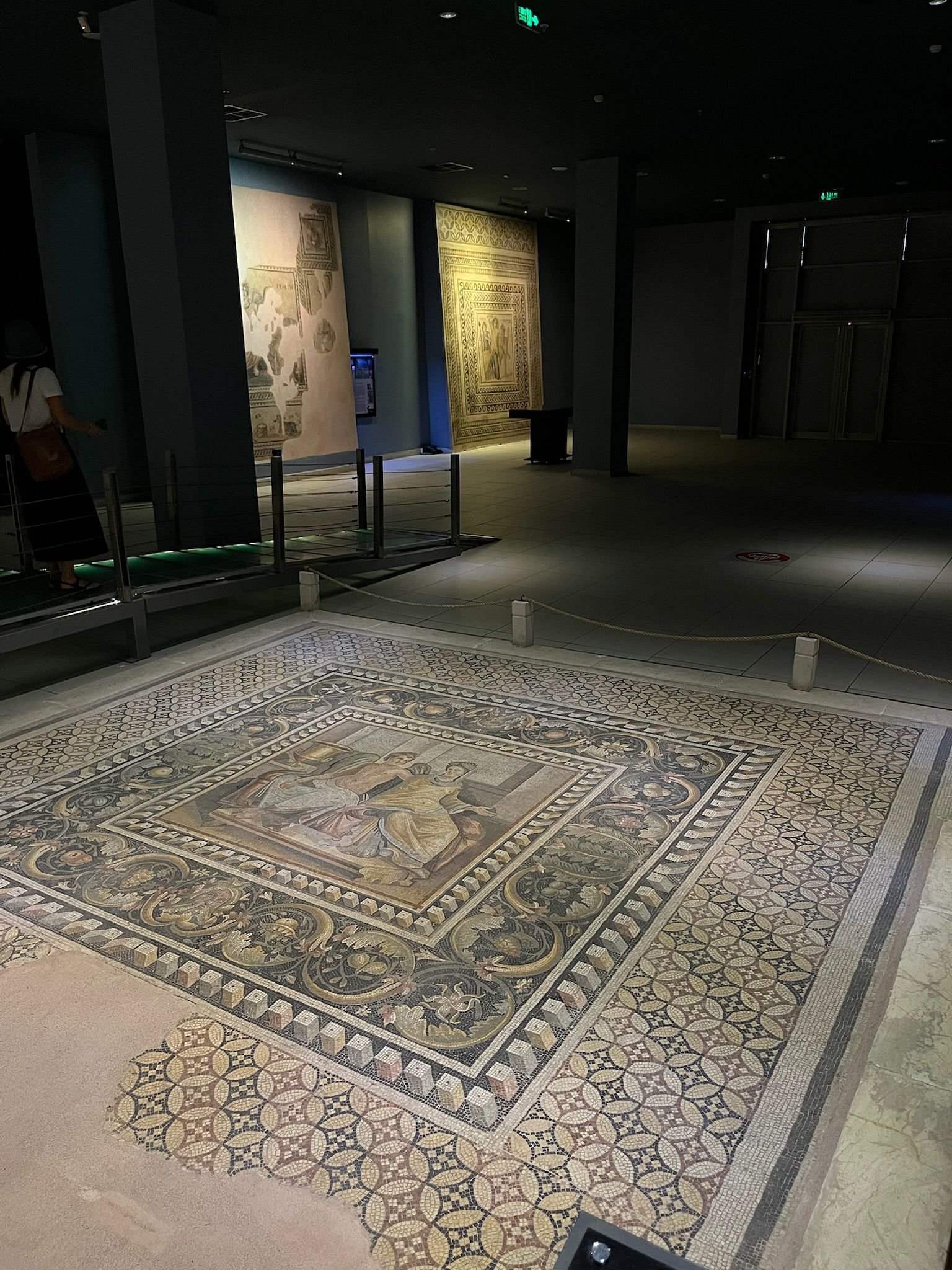
Eros and Psyche Mosaic / Zeugma Museum, Gaziantep
Frescoed Walls in Zeugma
The frescoed walls, like the mosaics, feature mythological characters, passages from the Iliad, and graffiti such as “Long live Alexandros, you gave us a good meal!”
Daedameia and Penelope Fresco
The Daedameia and Penelope fresco was found in the sitting room belonging to the women, called the Gynekeion. The frescoes represent family, marriage, loyalty, and devotion.
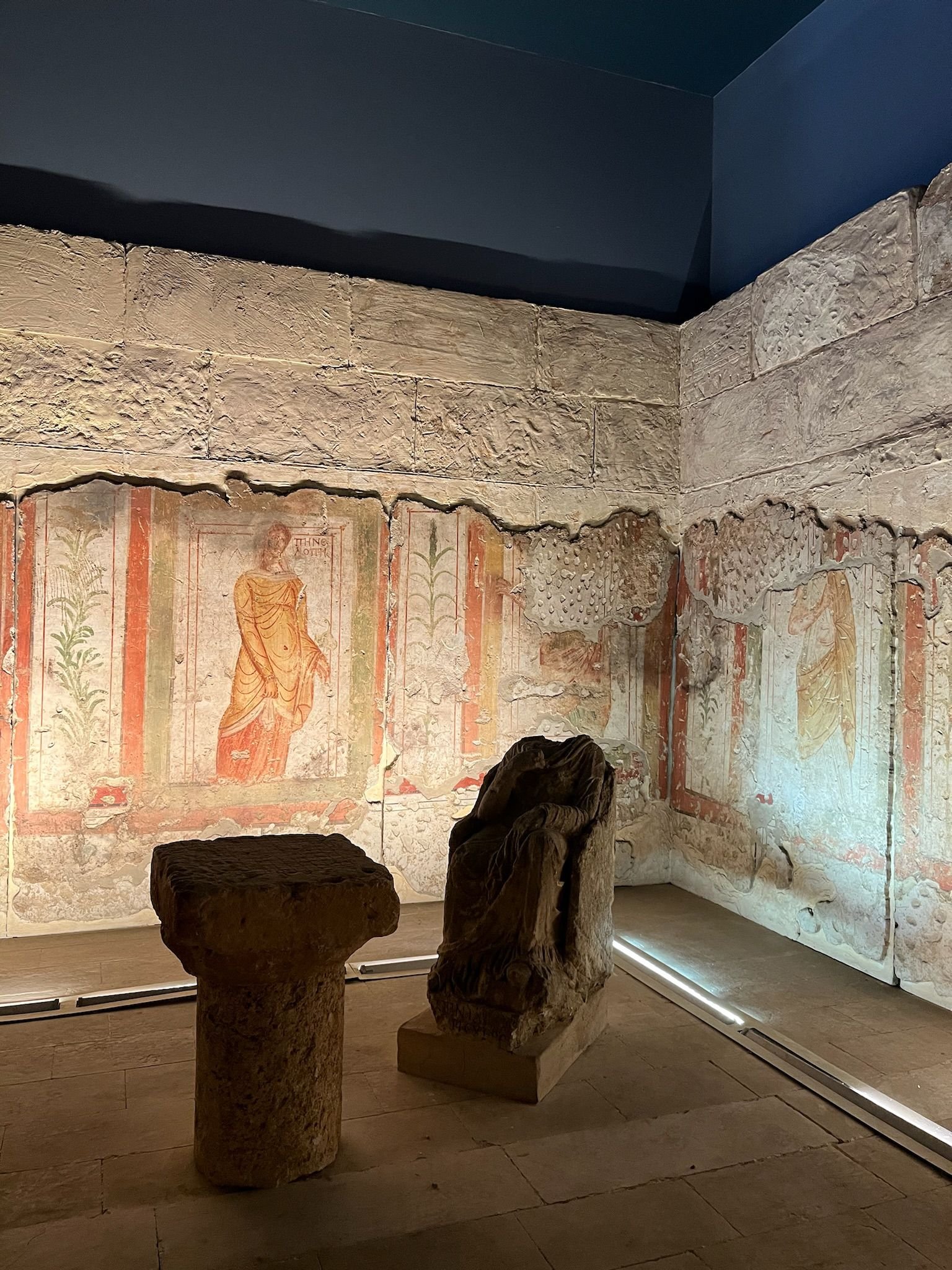
Daedameia and Penelope Fresco / Zeugma Museum, Gaziantep
Daedameia is known in Greek mythology as the wife of Achilles. Achilles married Daedameia before going to the Trojan War.
Penelope appears in the Odyssey as the wife of Odysseus. Although Odysseus did not return from the Trojan War for years, Penelope remained faithful to him.
Zeugma Architecture
The architecture of the buildings in the ancient city of Zeugma is quite luxurious, ostentatious, and spacious according to the conditions of the period. Since the inhabitants of the ancient city were wealthy families, art was important in the buildings that were constructed. The number of mosaics, colors, and frescoes used in the buildings was seen as an important indicator of the status of the owner.
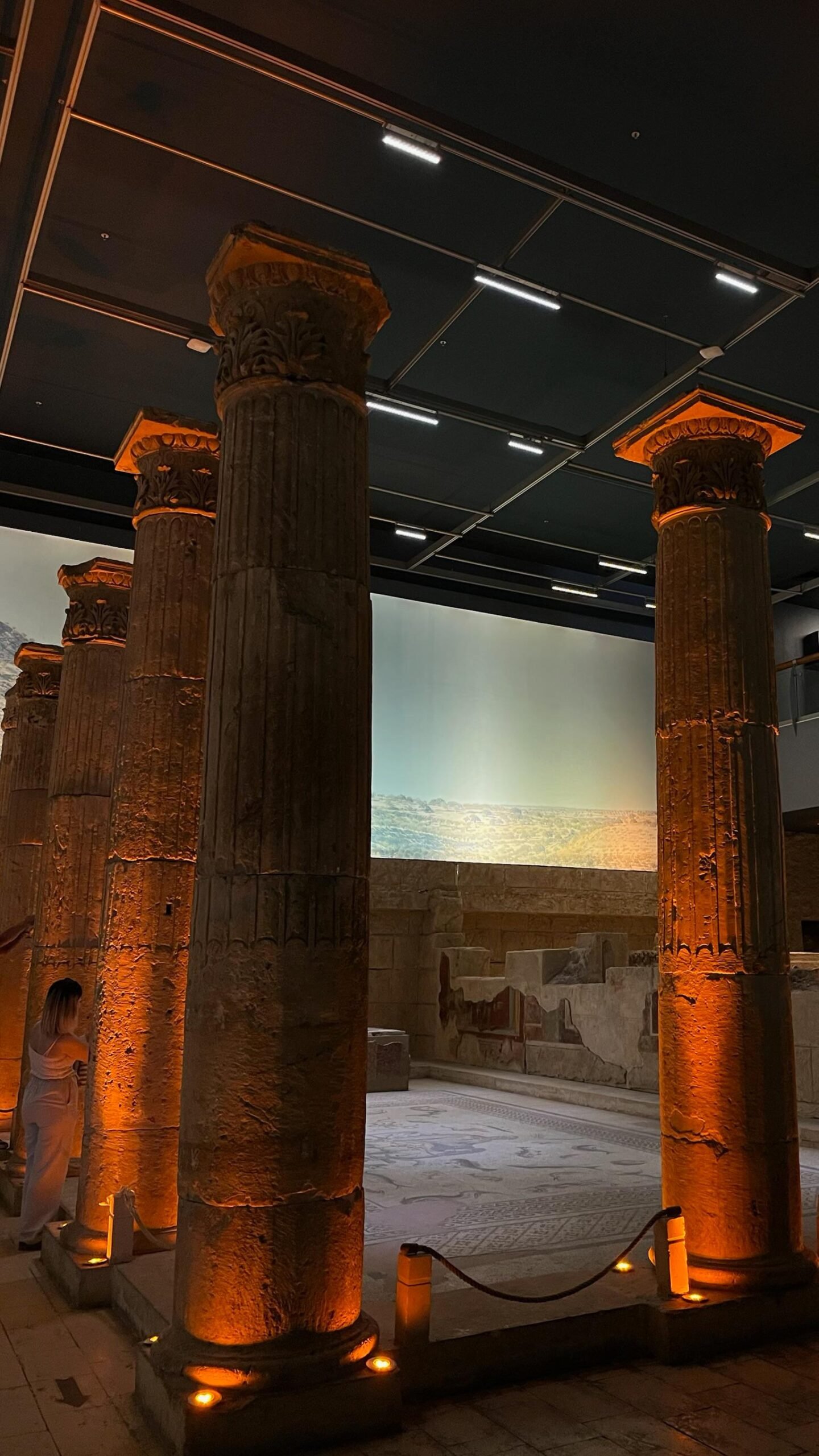
Zeugma Architecture / Zeugma Museum, Gaziantep
The interior layout of the villas in Zeugma:
Atrium (entrance courtyard)
Peristyle (inner courtyard)
Triclinium (dining room)
Oecus (living room)
Gynekeion (women’s quarters)
Cubiculum (bedroom)
Tablinum (study)
Balneum (bathroom)
The mosaics used on the floors of the villas were created by artists arranging colorful, natural stones extracted from the Euphrates River, which were cut into small pieces called “tessera” and then arranged in cubes. There is no paint on the stones.
Located in northwestern Mesopotamia, Zeugma Ancient City, with its strategic and commercial importance connecting the Silk Road and the Euphrates, is an important cultural heritage that reflects the beliefs, cultures, and art of the people who lived there from that day to this day. We respectfully salute the officials, archaeologists, and countless workers whose names we do not know, who have contributed to preserving this heritage and bringing it to the present day.
We hope that one day your path will lead you to Zeugma.
Thank you for reading, and we look forward to your valuable comments.
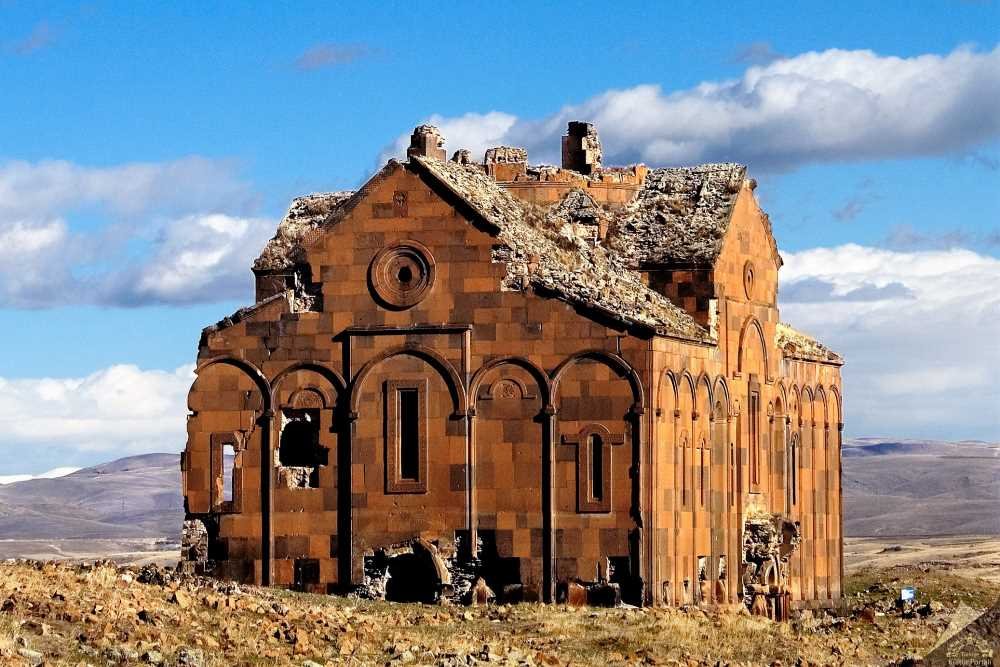

Comments
No comments yet. Be the first to comment!